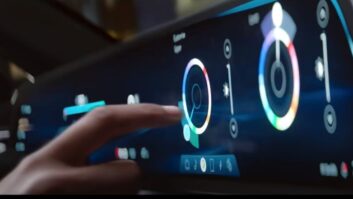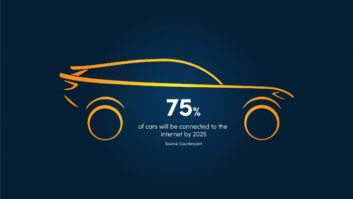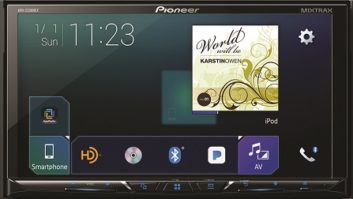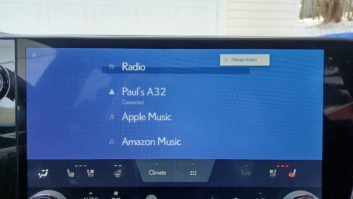
I’ve written for years that OEMs are moving away from CD players in their in-dash receivers. That trend is accelerating as automakers move away from including more hardware in the dash in favor of apps that can be accessed by a smartphone connected to the vehicle.
Those apps can quickly be swapped in or out depending on consumer demand, receiver manufacturer reps told Radio World at last week’s CES show. It used to take some five years to get on a car platform. The proliferation of apps and other software “shortcuts” can cut that time by months, sources told RW.
Now one of the big three U.S. automakers, General Motors, has announced that when it rolls out the optional MyLink infotainment system on the 2013 Chevrolet Sonic RS this summer, there will be no CD player.
Automotive News reports the Sonic RS debuted at the Detroit Auto Show this week. The paper quotes a GM exec as saying Sonic customers told the automaker to drop the CD player because they don’t use it and don’t want to pay for it.
Who does use CD players in the car? Aging boomers, according to automotive analyst John Canali of Stratacom. He estimates that North American sales of infotainment systems that don’t contain a CD player in North America will rise from 331,000 units this year to 12.1 million units in 2018.
Meanwhile, Internet radio is gaining more ground in the dash. We reported last week that Pandora personalized Internet radio is or will be in 16 automakers’ brands this year, up from four last year. Slacker is gaining momentum as well.
And while Clear Channel’s iHeartradio and CBS Radio’s last.fm apps are or will be in more devices in 2012, sources hammered home the fact that terrestrial radio needs to look better in the dash to compete with the updated look of personalized services. That means transmitting data for images to be synched with the audio, or the so-called “Artist Experience” for HD Radio stations.
Of the umpteen demos I experienced last week in new cars, I can’t tell you how many times a terrestrial station’s stream was displayed with text only, no image. That looks dull compared to the vivid imagery of a personalized Internet stream.
In shared cab rides last week, CE executives from all kinds of companies would say something to me like “Ugh, radio needs to innovate” or “Radio needs a better image in the car.” That’s harsh, and the old adage is true, that perception is reality. That’s their perception of traditional radio.
Young people want to bring their devices into the car. They want those to work (safely) in a moving vehicle and have told automakers to make that happen. Some automakers have been surprised at the pace of this trend, I learned.
Manufacturing and selling a car is “no longer about bending metal,” a Pioneer rep told me; it’s about providing a feature-rich experience.
And if radio doesn’t step it up, though it may still be included in the dash for several more years, eventually traditional AM/FM won’t be if younger people don’t actually use it.
Think about that.












